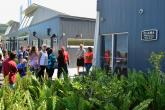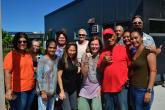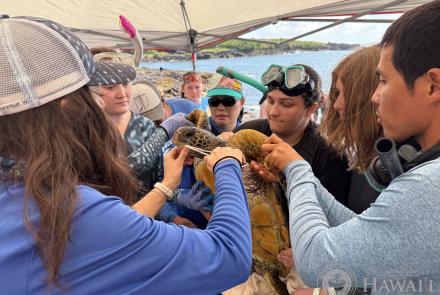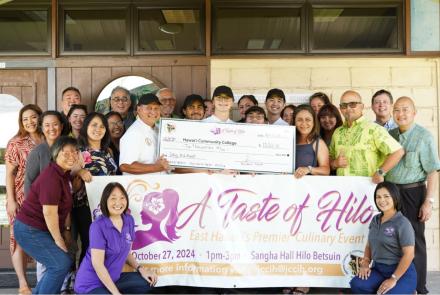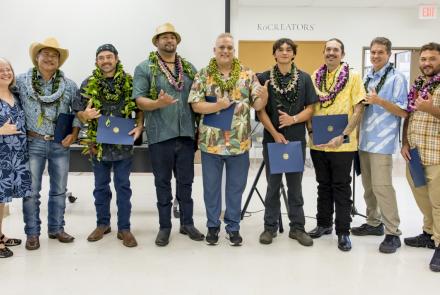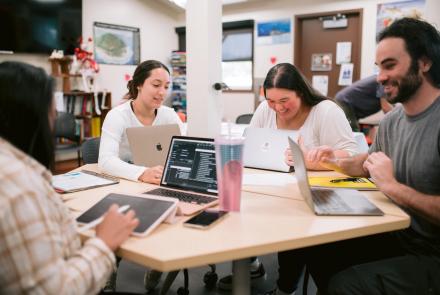Kūpuna Helps Dedicate New Signage at Hawai‘i CC- Pālamanui
Members of the Hawai‘i Community College Kauhale celebrated new building signage at the Hawai‘i CC – Pālamanui campus during an event on November 15. The names for the buildings were chosen in consultation with Kūpuna Karin Kawiliau Haleamau, who encouraged the campus to name the buildings after the plants that grow – or in some cases used to grow – in the area where the campus was built and that provided food, healing and shelter for his family and many others who descend from the land in that area. Former Hawaiian Studies instructor Blossom Pualani Lincoln Maielua was also a key part of the effort to establish the building names and signs as she consulted with Haleamau.
During the sign dedication event, Haleamau led a group of faculty and staff on a tour and described the uses of the plants and their cultural significance. Hawaiian Studies Professor Kalani Flores explained why particular plants were selected for the various buildings.
The building names and the explanations of the names are as follows:
Ēlama - This name was given to the Student Services and Admissions building as it is here that our students begin their journey toward their own enlightenment. This naming gives recognition to the endemic ebony tree, once heavily populating the area and providing the root of our campus name Pālamanui, also referencing enlightenment through knowledge.
Limuwai - This medicinal plant is no longer seen in the plains of Pālamanui, but was once gathered by families of this area for healing. The literal translation of this plant’s name acknowledges wai (or water), the source of life, and limu, a frequently harvested marine plant that provided protein for the ancestral people of the coastal areas. It is for these reasons that this name was given to the Sciences and Technology building, as we hope for it to remain on the cutting edge of research that will ensure healthy ecosystems for our communities.
Kaliko - Another medicinal plant no longer seen in the plains of Pālamanui was once gathered by families of this area for healing. Kaliko also means the leaf bud, or to put forth leaves. This name was appropriately given to the Library, Computer Lab, and Testing building, where our students gather and are supported to bloom into their fullest potential.
Pānini - Introduced by the Mexican cowboys, the cactus was quickly inherited by the landscape and people, as this plant provided water and food for the cattle and the paniolo (cowboys) who frequented this area for many decades. This name was given to our Culinary Arts building, where students are trained and empowered to create dishes that reflect our island life and edible resources.
Koali - A variety of the morning glory vine that contributed to the dry land forest plants of this area quickly disappeared upon the arrival of the invasive fountain grass. The koali was used by the ancients to heal broken bones, muscle, and tendon damage. In the first month that the campus was open to faculty and staff, many of us noticed a koali vine fiercely taking root on the northern end of our grounds. This final building hosts the majority of our instructional classes; therefore, it was named Koali in recognition of the return of this plant to the natural landscape and the continued healing through education that our institution will bring to the communities of West Hawaiʻi.



